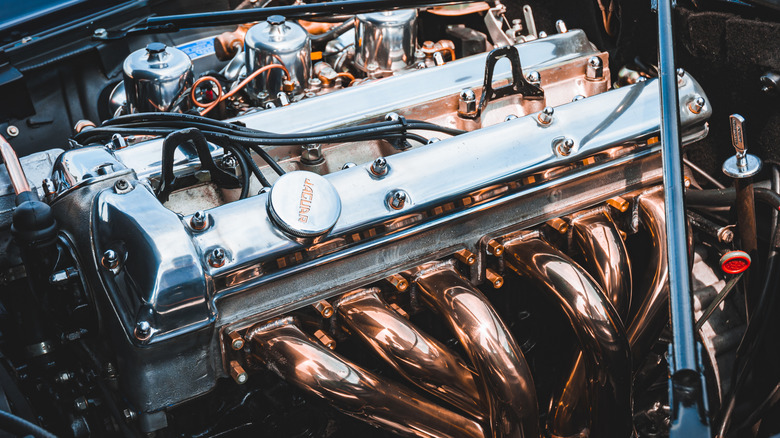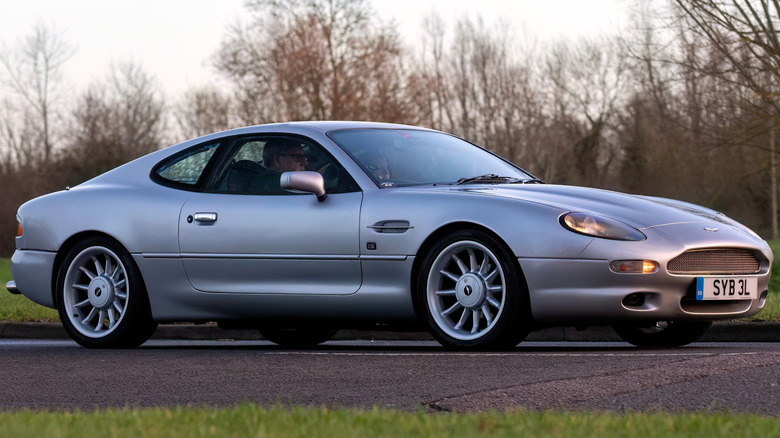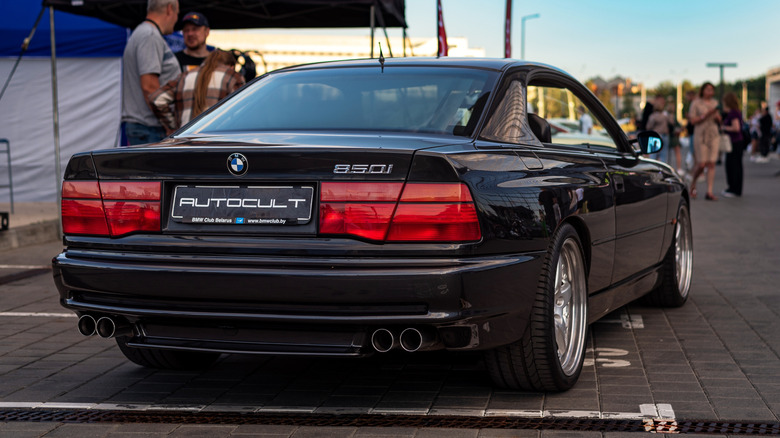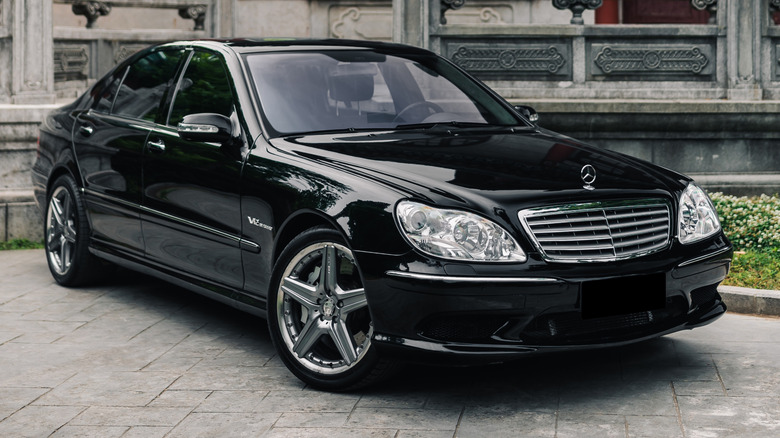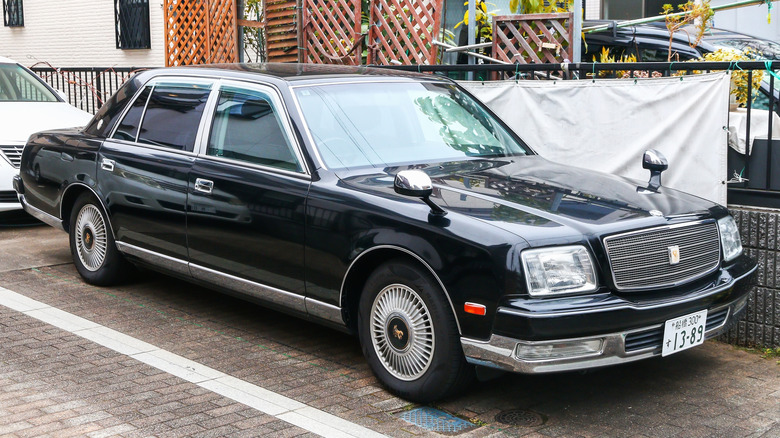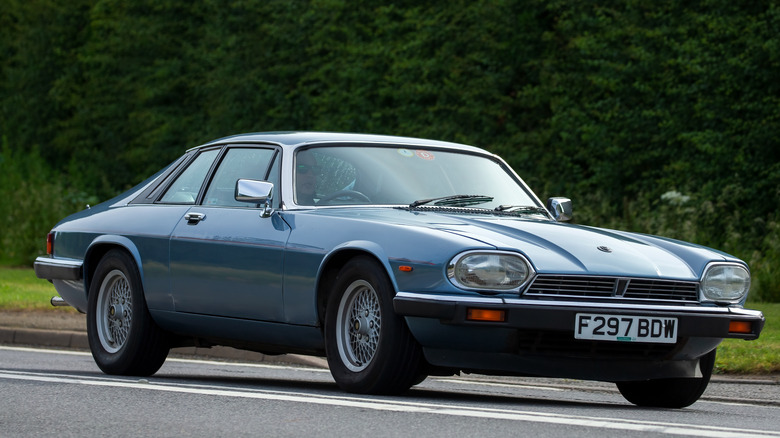5 Of The Cheapest Cars With V12 Engines
"I firmly believe that everyone, who is worth anything at all, should own a 12-cylinder car before they die. Because there's nothing else like it." So goes the famous quote from renowned motoring journalist, David E. Davis, who referred to it as "one of the great operatic experiences of all time."
Short of something like a W16 Bugatti Veyron, owning the mechanical symphony of a V12 is the ultimate in automotive indulgence. Unfortunately for any first owners, V12 cars usually depreciate like unrefrigerated milk. However, it presents a tantalizing opportunity for any motoring enthusiasts chasing a performance bargain. Here, we will highlight five of the cheapest ways to join Club V12.
To the best of our knowledge, there haven't been any American V12s since the late '40s, so this listing will have a distinctly European flavor, although there is at least one Japanese car. Every car here is rear-wheel drive — as it is decreed in Leviticus — and we're opting for cool and interesting over "sensible".
Unless otherwise stated, prices are based on data from Classic.com. The cars chosen here are mostly available worldwide, and some potential choices have been excluded that are not available in the United States.
Aston Martin DB7 Vantage (1999 to 2003)
Starting this list is a Bond-esque coupe, once declared by Lord Jeremy Clarkson himself as the best looking thing made by man. This was the beginning of Aston Martin's Ford era, after years of fighting bankruptcy. It's now a bargain: at the time of writing, the average price was $31,340, with the lowest price at $11,750 and the highest at $80,000.
The DB7 V12 Vantage is powered by a 5,935 cc 48-valve V12 that produces 420 horsepower and 400 lb-ft of torque, paired with either a six-speed manual or a five-speed automatic. There is a simplistic myth that this engine is just two Duratec V6s welded together. It isn't. The Vantage claims a top speed of 185 mph and a 0-60 mph time of 5 seconds. Beware though — the Aston's old traction control makes for a lairy backend that may cut loose even in supermarket car parks.
Beneath its gorgeous looks, however, lies an elderly Jaguar XJS platform — albeit heavily modified — and Ford and Jaguar parts can be found everywhere. Due to its ancient underpinnings, the DB7 is nowhere near as sharp as the newer DB9, but its softer body and suspension may be better suited to drivers with bad backs and piles than your average bone-jarring supercar.
Although those Ford and Jaguar components were looked down on in its day, they may work in your favor when sourcing replacement parts, as they are substantially cheaper than anything branded "Aston Martin". Normal servicing (spark plugs, oil changes, etc.) shouldn't be too hard for home mechanics but a specialist may be needed for difficult engine work.
BMW E31 850i (1991 to 1994)
When this 8 series was developed, it was intended to surpass the already highly regarded 6 series as BMW's ultimate grand tourer. In a world of brash Ferraris, the 850 line was the Fatherland's quiet, civilized, gentlemanly alternative.
Powering the 850i is BMW's first production V12, the M70. This all-aluminum 5.0-liter V12 produces 296 horsepower and 332 lb-ft of torque. 0-60 mph takes 6.2 seconds, which is now considered leisurely but was brisk for the time. Buyers had a choice between a four-speed automatic and a six-speed manual — the first six-speed manual to be fitted to a V12.
Maintenance wise, this V12 isn't overly complex — it only has two valves per cylinder and uses a timing chain instead of a belt. It is, however, essentially two straight-six engines joined at the hip, and BMW's workaround was to use two of everything: two fuel pumps, two batteries, two ECUs, and so on. Beyond aging rubber seals and bushings, expect to replace dying electronics. This car had a lot of clever gadgetry which isn't holding up well, nor is it cheap to replace.
Prices vary greatly depending on whether you want a manual or an automatic — automatics are substantially cheaper. Average prices are currently $21,756, with the lowest sale at $8,800 and the highest at $75,000. Three pedal cog-stirrers usually pay a premium. Manual versions currently have an average price of $33,558, with the lowest sale at $13,750 and the highest at a cool $162,400.
AMG S65 W220 (2006)
Welcome to the dark side. When released (and it was released for one year only), this AMG-tuned Mercedes S-Class was the most powerful sedan in the world. It packed a bi-turbo 6-liter V12, producing 612 horsepower and 737 lb-ft of torque, which in eurospeak hits the magic number of 1,000 Nm. The 0-60 mph is within 4.2 seconds, with an electronically limited top speed of 155 mph.
With such ridiculous levels of torque, AMG had to use an older five-speed automatic instead of Mercedes' newer seven-speed, as it was just too much grunt to handle. The AMG's brutal power and acceleration are often too much for the traction control too. The S65 will spin its tires even at cruising speeds and the traction control light will probably flash during quick bursts of acceleration.
With all this performance, it's worth bearing in mind this is no lightweight supercar: it has rear sunshades, a DVD player, power reclining rear seats, an infrared camera for nighttime illumination — it even has rear seat massagers. Yet despite its exclusivity and monstrous power figures, this fire-breathing sedan only has an average sale price of $24,860, with the lowest at $11,700 and the top sale at $48,350.
In terms of pure dollars per horsepower, you can't find better. If you take the expensive maintenance out of the equation — which you shouldn't — this German muscle car will monster almost anything at the lights, but at a bargain price, in opulent European luxury.
Toyota Century (1997 to 2017)
If you fancy the luxury of a Rolls or Maybach, but with Japanese reliability, this is your car. The Century was designed to be the finest automobile Toyota could make and has been used by the country's richest and most powerful, from politicians and Yakuza bosses, to the imperial family itself.
The attention to detail is astonishing. The finish of the paint is among the best in the world and is so deeply reflective that dignitaries would customarily check their appearance in the rear pillar before facing the public. Everything is whisper quiet — sound insulation is of top priority and Toyota usually fitted a wool interior for added sound deadening.
The Century's 5.0-liter engine features in our list of the best V12s ever made and produces a buttery-smooth 276 horsepower and 340 lb-ft of torque. Earlier models received a four-speed automatic gearbox, and a six-speed from 2005. Gear changes are imperceptibly smooth. The excellent air suspension doesn't roll or wallow in the corners, and the tires are big and squashy, as befits a proper luxury car.
If you're getting tempted, keep in mind that almost all examples will be right-hand drive Japanese imports with metric readouts. If that's fine, then the average price is currently $17,089, with the lowest sale at $9,000 and the highest at $34,156.
Centuries are beautifully made, reliable, and fastidiously maintained by their owners. But there's no escaping the fact that it's a V12 that's getting old and parts may be difficult to source and expensive. Nevertheless, if you can live with V12 fuel bills, these can be a great purchase, especially if you live in an RHD market.
Jaguar XJS Series II and III (1982 to 1991, 1991 to 1996)
Here we are, the cheapest way into the V12 club. For the brave souls willing to continue, you will get bucket-loads of "character" and an engine with real heritage. The XJS was initially scorned when it followed the gorgeous Jaguar E-Type, but time has been kind on the XJS's caddish styling, which instantly evokes notes of tweed, brandy, and a string of HR complaints.
The Jaguar is surprisingly well-mannered, being very smooth and composed over bumps, but it can still take a corner when it needs to. Inside it is tremendously quiet, isolated from both the engine and outside traffic. The car isn't fast by today's standards, but the power is smooth and effortless, with a confident pull that hardly moves the tachometer.
The 5.3-liter 24-valve V12 produces 291 horsepower and 317 lb-ft of torque, though the Series III introduces 6.0-liter versions with a range-topping 318 horsepower and 341 lb-ft of torque. Depending on the model and gearbox, we found 0-60 mph times ranging from 6.5 to 8.0 seconds. Later models received a GM-sourced four-speed automatic, which was a big improvement over previous three-speed models. Manuals are rare and reliability is awful. Although the engine is fine, everything else is poorly made, with loose trim, dead ancillaries, collapsed mechanicals, and rust all being common problems. Then there's Britain's biggest crime against humanity: Lucas electrics.
Newer models are better made and the smarter bet. At the time of writing, the Series II had an average price of $15,489, with the lowest sale of $550, and the highest sale of $155,811. The Series III had an average price of $15,460, with the lowest sale of $550, and the highest sale of $61,868. If you're tempted by the cheapest models, don't. Just don't.
